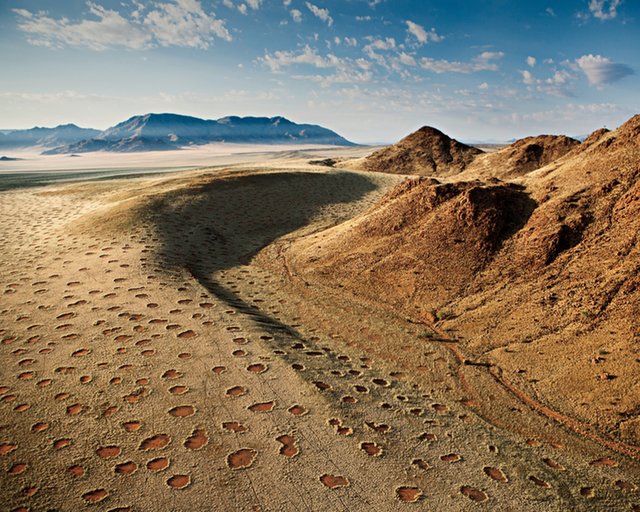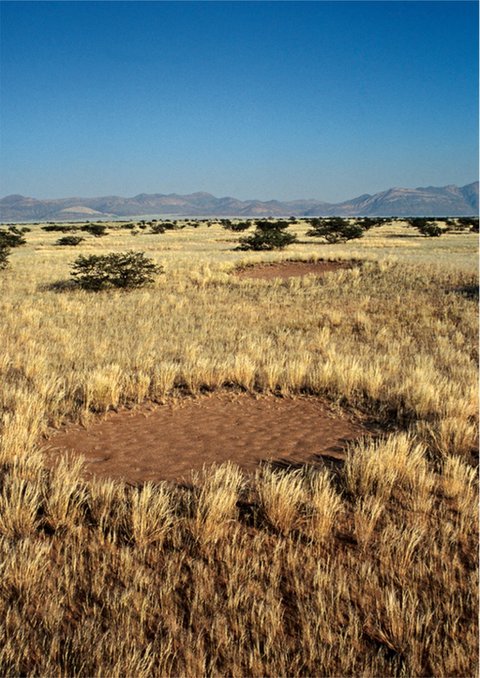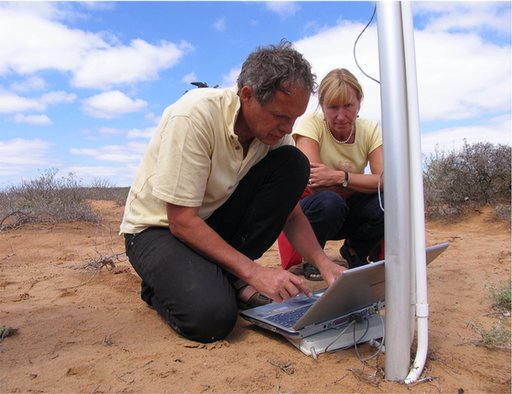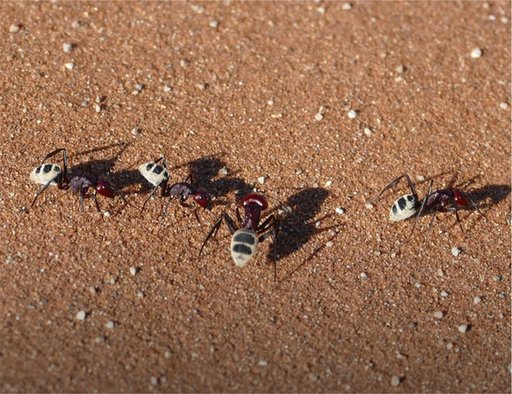
Adragonstirsdeepbeneathadesert.Itslithersthroughthesandydirt,breathingafiery,poisonousgasasitmoves.Thegasbubblesuptothesurface.There,itburnscirclesofbaredirtinthe grass.
Orsothestorygoes.Noonehasseenthismythicalbeast.Yet,somepeopleinsouthernAfricasayit’sthere.It’showtheyexplainthemysteriouscirclesthatappearontheeasternedgeoftheNamib Desert.
Thousandsofcirclesstretchasfarastheeyecansee.Somearesmall,justonemeter(threefeet)wide.Othersareaswideas50meters(164feet).Itwouldseemthatthedragonhasbeen busy.
Searching
foraCause
Noteveryonebelievesindragons.So,scientistshavelookedforothercausesforthe circles.
Somethinkthat,likethemythicaldragon’sfierybreath,agasbubblesup.Othersthinkthatantsmaychewtherootsofthegrasses.Stillothersthinkthattoxicplantsmayspreadtheirpoisons.Anyoftheseactionscouldhavethesameeffect.Theycouldkillthe grasses.
Thesearealltheories,orideas.Theyseempossible.Yet,scientistshavetoproveatheorybeforeit’sacceptedas fact.
Mysteriouscirclesstretchasfarastheeyecan see.


Mysteriouscirclesofbaredirtdotthisdesertonthewestcoastofsouthern Africa.

Africa
NamibDesert

NorbertJuergensandhiswife,Irmel,collectweatherdataneara circle.
DesertDiscoveries
Onescientistthinkshemayhavesolvedthismystery.BiologistNorbertJuergenshasvisitedthisdesert40times.He’sstudied1,200circles,lookingforevidenceofwhatcausedthem.He’slookedforpatternsamongthecircles,tryingtodiscoverwhattheyhavein common.
Thebiologistsiftedthroughthedirtinsidethecircles.Hetestedthedirtforchemicalsandmeasuredhowmuchwaterwasinit.Herecordedtheanimalshesawinthecircles.Hewrotedownthenamesofplantsgrowingnearby.Hetrackedchangesin
the weather.
ThenJuergensstudiedallhisdata.Hefoundsomedifferencesbetweenthecircles.Coloniesofantscrawlthroughsome.Spidersspinwebsinthegrassesgrowingaroundothers.Aardvarksevenvisitsome circles.
CommonClues
Juergensdidn’tjustfinddifferencesamongthecircles.Healsofound similarities.
Eachcirclehaddry,sandysoilinitscenter.Healsofoundsomethingsurprising.Eveninthedryseasonwhenitbarelyrains,thegrassesaroundthecirclesstayedalive.Tofindoutwhy,hedugdeepintothesoil.Hediscoveredwetsandundereachcircle.Thegrassrootstappedintothewatertokeepthegrasses alive.
Juergensalsofoundsomethingelseineverycircle.Hefoundsandtermites.Thesetermitestunnelthroughdirt.Theychewonplant roots.
Juergensstudiedthesecommonclues.Helookedforwaystheycouldconnect.Thenhecameupwithhisown theory.

sand termites
MysterySolved?
Juergensthinksthattermiteseatsomegrass roots.Thatkillsthegrassgrowingabovetherootsandformsacircleof
bare dirt.
Whenitrains,watersoaksintothedirt.It’ssavedinapoolunderthedirt.Thetermitesdrinkthiswater.Thegrassesaroundthecirclesoakitup.It’showtheseinsectsandplantssurviveinthedesertduringthedry season.
Juergenswillhavetostudymorecirclestoproveifhis theoryiscorrect.Yet,hemaybeonestepclosertosolvingthemysteryofthecirclesinthesand.Thetermitesaren’tfire-breathingdragons.Still,they’reprettyremarkable.Thesetinyinsectsmayhavecreatedoneofnature’sstrangest mysteries.
Aviewfromaboveshows circularpatchesdottingthelandintheNamib Desert.